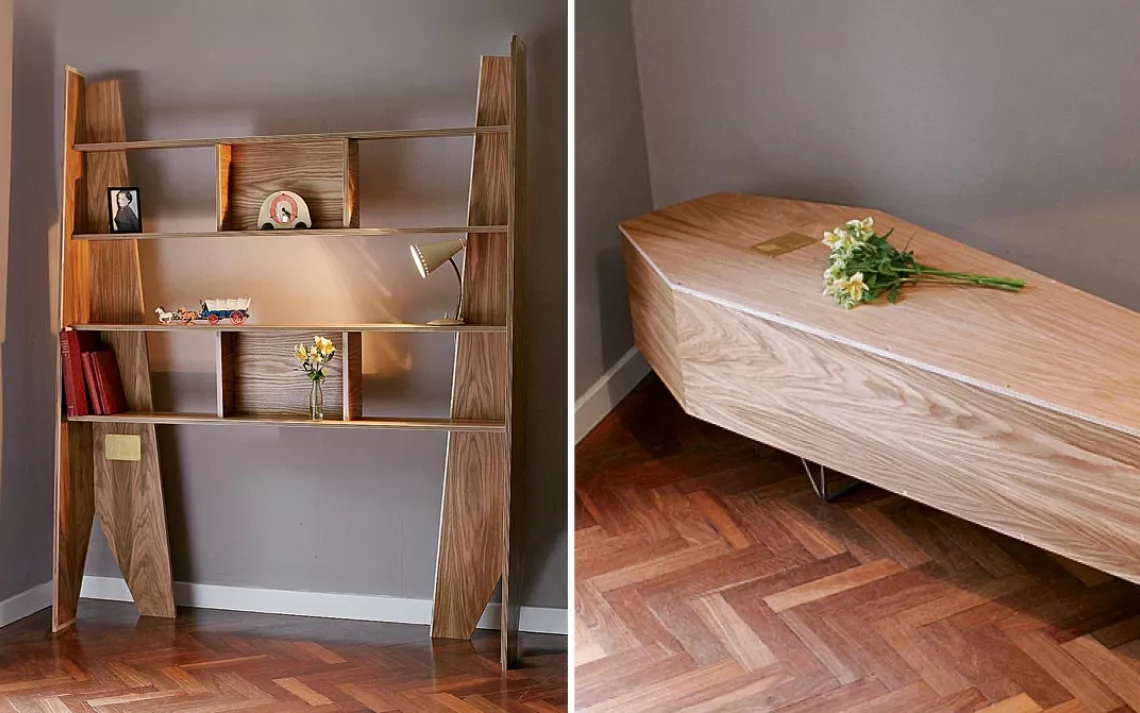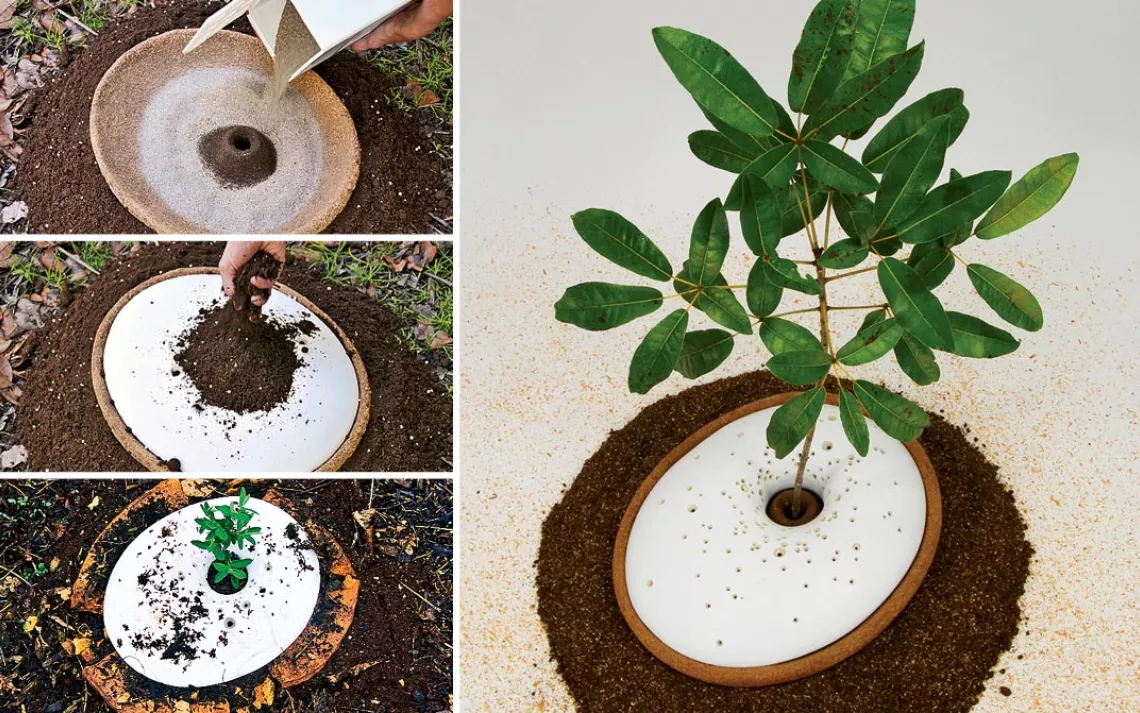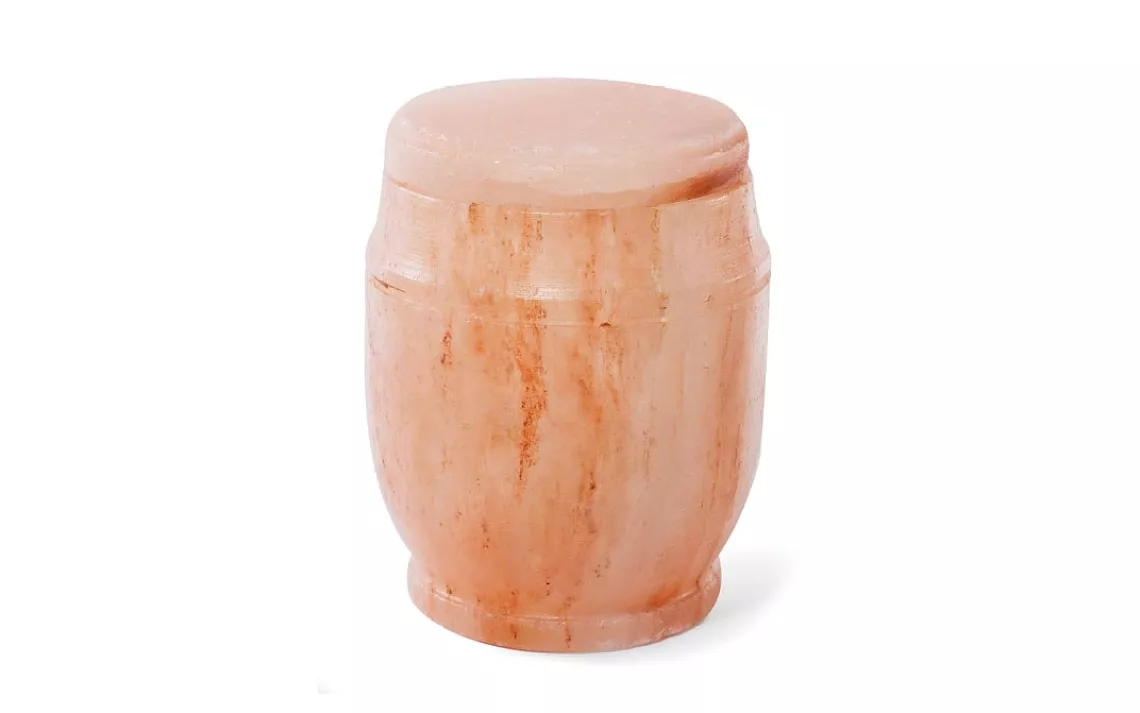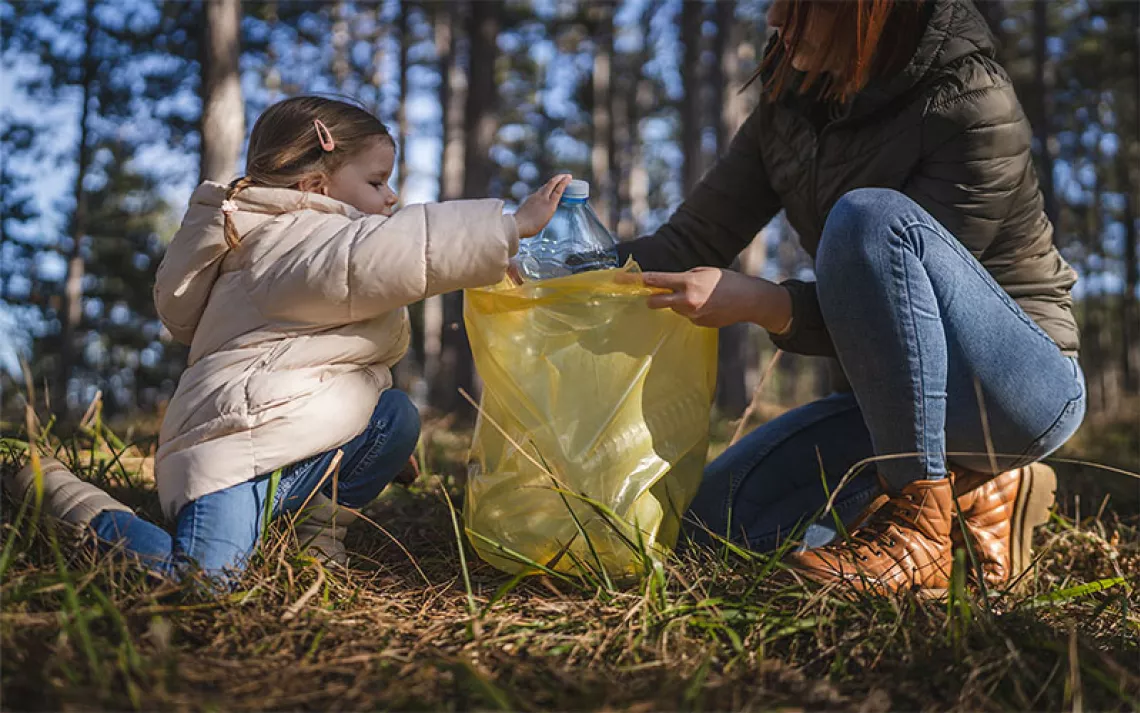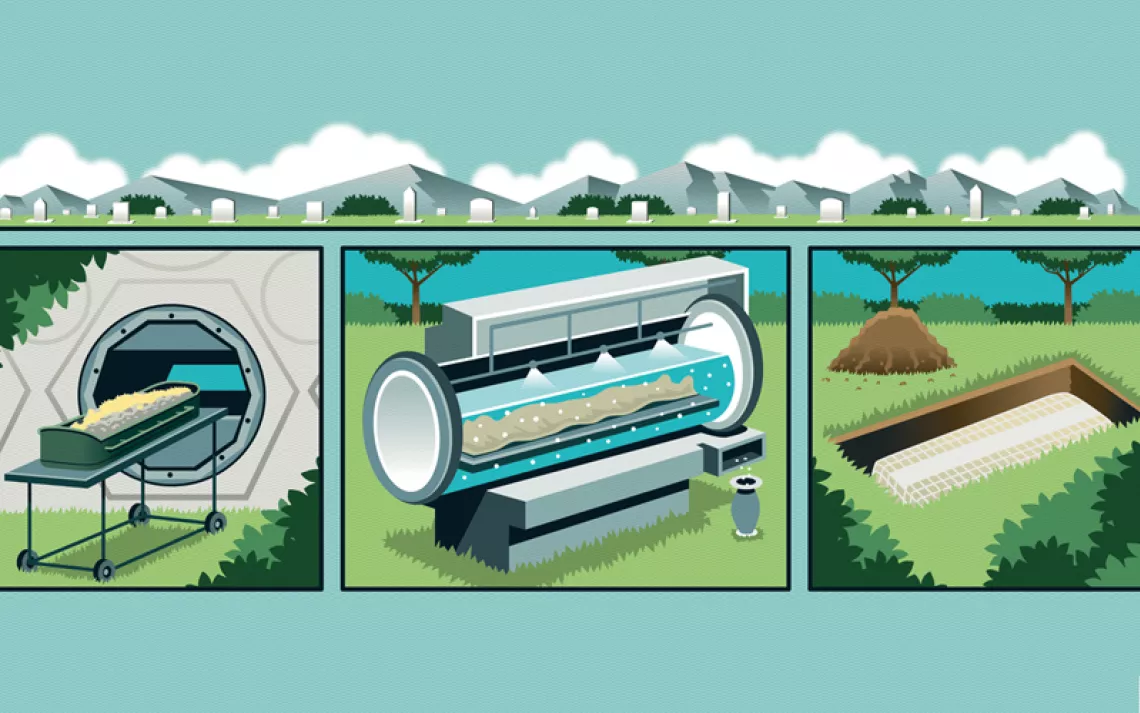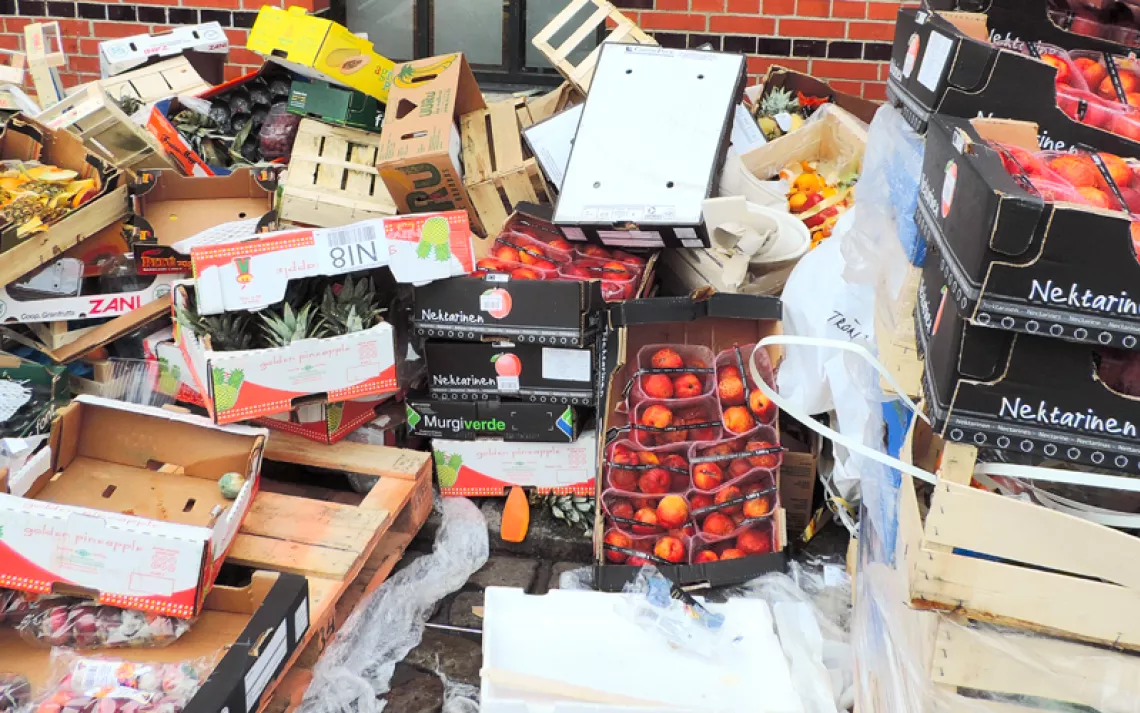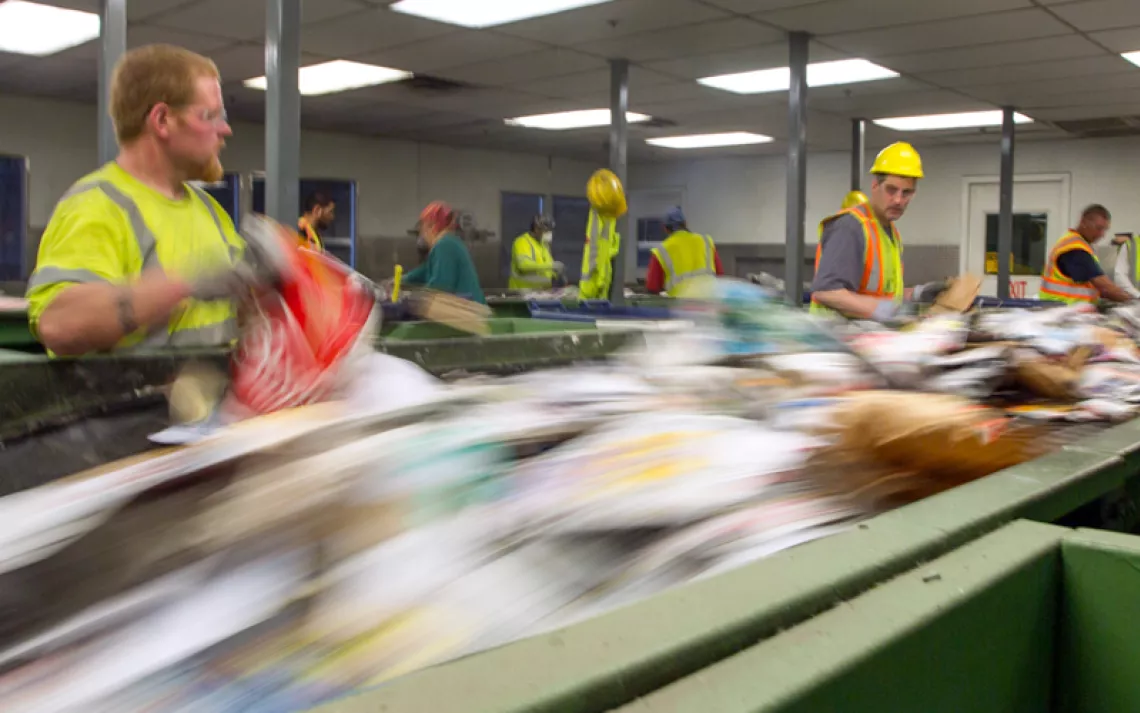How to Be Green to the Grave
The bad news: You're dead. The good news: You can bring your green convictions with you when you go. Click through the slideshow to see how you can buck the industrialization of death.
Pumping the deceased with formaldehyde, tucking them into pricey metal caskets, and plunking them into a concrete-lined grave has become the American way of dealing with the dead.
Of course, there is a countermovement. Alternatives to traditional burial range from cremating our beloved’s remains and scattering them to simply burying Gran in a dirt hole.
“People who are recycling grocery bags and composting and doing what they can to take care of the planet don’t want their dispositions to unnecessarily pollute or impact the environment,” says Green Burial Council founder Joe Sehee.
The council rates green burial sites throughout the country, including hybrid burial grounds—cemeteries that allot part of their grounds for burying bodies in unlined graves—and natural burial grounds, where graves are unlined and burial containers are made from natural or nontoxic materials.
For the ultimate environmentalist, Sehee’s even working on helping national parks preserve bordering lands as green burial sites.
“In its truest form, green burial is a naturalized landscape where there wouldn’t even be markings—not a stone, not a plant,” says Suzette Sherman, founder and CEO of Seven Ponds, which promotes a healthy attitude toward death. “You just wrap the body and dig a hole. There are no liners, so you’re literally letting the body go back to the earth.”
Alas, there’s no perfect way to go. Sherman points out that toxins stored in the body’s fat and tissue can leach into the ground. Still, the idea of making ecofriendly final arrangements is catching on slowly.
“People don’t like to think they’re going to die,” says Esmerelda Kent Kinkaraco, the founder of a green burial company. She made costumes for aerialists before making shrouds with handles for hoisting a body into a grave. “It’s not a fun, cool thing. It’s death.”
 The Magazine of The Sierra Club
The Magazine of The Sierra Club
